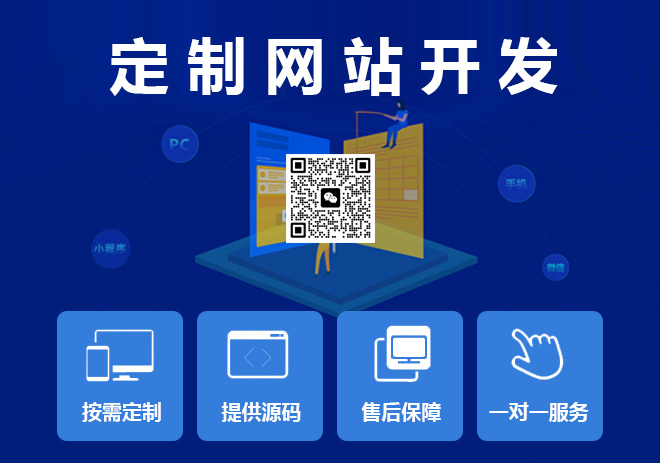Hibernate批量更新和批量删除实战
本文向大家介绍Hibernate批量更新和Hibernate批量删除,可能好多人还不了解Hibernate批量更新和Hibernate批量删除,没有关系,看完本文你肯定有不少收获,希望本文能教会你更多东西。

Hibernate批量更新是指在一个事务中更新大批量数据,Hibernate批量删除是指在一个事务中删除大批量数据。以下程序直接通过Hibernate API批量更新CUSTOMERS表中年龄大于零的所有记录的AGE字段:
- tx = session.beginTransaction();
- ??Iterator customers=session.find("from Customer c where c.age>0").iterator();
- ??while(customers.hasNext()){
- ??Customer customer=(Customer)customers.next();
- ??customer.setAge(customer.getAge()+1);
- ??}
- ??tx.commit();
- ??session.close();
如果CUSTOMERS表中有1万条年龄大于零的记录,那么Session的find()方法会一下子加载1万个Customer对象到内存。当执行tx.commit()方法时,会清理缓存,Hibernate执行1万条更新CUSTOMERS表的update语句:
- update CUSTOMERS set AGE=? …. where ID=i;
- ??update CUSTOMERS set AGE=? …. where ID=j;
- ??update CUSTOMERS set AGE=? …. where ID=k;
以上Hibernate批量更新方式有两个缺点:
(1) 占用大量内存,必须把1万个Customer对象先加载到内存,然后一一更新它们。
(2) 执行的update语句的数目太多,每个update语句只能更新一个Customer对象,必须通过1万条update语句才能更新一万个Customer对象,频繁的访问数据库,会大大降低应用的性能。
为了迅速释放1万个Customer对象占用的内存,可以在更新每个Customer对象后,就调用Session的evict()方法立即释放它的内存:
- tx = session.beginTransaction();
- Iterator customers=session.find("from Customer c where c.age>0").iterator();
- while(customers.hasNext()){
- Customer customer=(Customer)customers.next();
- customer.setAge(customer.getAge()+1);
- session.flush();
- session.evict(customer);
- }
- tx.commit();
- session.close();
在以上程序中,修改了一个Customer对象的age属性后,就立即调用Session的flush()方法和evict()方法,flush()方法使Hibernate立刻根据这个Customer对象的状态变化同步更新数据库,从而立即执行相关的update语句;evict()方法用于把这个Customer对象从缓存中清除出去,从而及时释放它占用的内存。
但evict()方法只能稍微提高批量操作的性能,因为不管有没有使用evict()方法,Hibernate都必须执行1万条update语句,才能更新1万个Customer对象,这是影响批量操作性能的重要因素。假如Hibernate能直接执行如下SQL语句:
- update CUSTOMERS set AGEAGE=AGE+1 where AGE>0;
那么以上一条update语句就能更新CUSTOMERS表中的1万条记录。但是Hibernate并没有直接提供执行这种update语句的接口。应用程序必须绕过Hibernate API,直接通过JDBC API来执行该SQL语句:
- tx = session.beginTransaction();
- Connection con=session.connection();
- PreparedStatement stmt=con.prepareStatement("update CUSTOMERS set AGEAGE=AGE+1 "
- +"where AGE>0 ");
- stmt.executeUpdate();
- tx.commit();
以上程序演示了绕过Hibernate API,直接通过JDBC API访问数据库的过程。应用程序通过Session的connection()方法获得该Session使用的数据库连接,然后通过它创建PreparedStatement对象并执行SQL语句。值得注意的是,应用程序仍然通过Hibernate的Transaction接口来声明事务边界。
如果底层数据库(如Oracle)支持存储过程,也可以通过存储过程来执行Hibernate批量更新。存储过程直接在数据库中运行,速度更加快。在Oracle数据库中可以定义一个名为batchUpdateCustomer()的存储过程,代码如下:
- create or replace procedure batchUpdateCustomer(p_age in number) as
- begin
- update CUSTOMERS set AGEAGE=AGE+1 where AGE>p_age;
- end;
以上存储过程有一个参数p_age,代表客户的年龄,应用程序可按照以下方式调用存储过程:
- tx = session.beginTransaction();
- Connection con=session.connection();
- String procedure = "{call batchUpdateCustomer(?) }";
- CallableStatement cstmt = con.prepareCall(procedure);
- cstmt.setInt(1,0); //把年龄参数设为0
- cstmt.executeUpdate();
- tx.commit();
从上面程序看出,应用程序也必须绕过Hibernate API,直接通过JDBC API来调用存储过程。
Session的各种重载形式的update()方法都一次只能更新一个对象,而delete()方法的有些重载形式允许以HQL语句作为参数,例如:
- session.delete("from Customer c where c.age>0");
如果CUSTOMERS表中有1万条年龄大于零的记录,那么以上代码能删除一万条记录。但是Session的delete()方法并没有执行以下delete语句
- delete from CUSTOMERS where AGE>0;
Session的delete()方法先通过以下select语句把1万个Customer对象加载到内存中:
- select * from CUSTOMERS where AGE>0;
接下来执行一万条delete语句,逐个删除Customer对象:
- delete from CUSTOMERS where ID=i;
- delete from CUSTOMERS where ID=j;
- delete from CUSTOMERS where ID=k;
由此可见,直接通过Hibernate API进行Hibernate批量更新和Hibernate批量删除都不值得推荐。而直接通过JDBC API执行相关的SQL语句或调用相关的存储过程,是Hibernate批量更新和Hibernate批量删除的***方式,这两种方式都有以下优点:
(1) 无需把数据库中的大批量数据先加载到内存中,然后逐个更新或修改它们,因此不会消耗大量内存。
(2) 能在一条SQL语句中更新或删除大批量的数据。
分享标题:Hibernate批量更新和批量删除实战
网站地址:http://www.csdahua.cn/qtweb/news39/363789.html
网站建设、网络推广公司-快上网,是专注品牌与效果的网站制作,网络营销seo公司;服务项目有等
声明:本网站发布的内容(图片、视频和文字)以用户投稿、用户转载内容为主,如果涉及侵权请尽快告知,我们将会在第一时间删除。文章观点不代表本网站立场,如需处理请联系客服。电话:028-86922220;邮箱:631063699@qq.com。内容未经允许不得转载,或转载时需注明来源: 快上网
- 怎么在手机上玩xp系统?windowsxp模拟器安卓
- 服务器能当家用电脑主机吗?家庭总服务器主机能干嘛
- ps怎么抠背景?(ps怎么抠背景图出来)
- James使用Linux,开启新的信息时代(linuxjames)
- 如何进入一个邮箱?(企业邮箱如何单个购买)
- windows及Linux服务器远程桌面连接方法
- 租用海外服务器有什么好处和优势吗
- 没有能力的人才会说别人
- 美国服务器是否适合用来外贸建站
- 科学家在仙女星系中发现银河移民?
- phpstudy怎么部署flask?(php虚拟空间租用怎么搭建)
- 云计算都包含什么类型的服务?云计算提供的服务包括
- 浅析C#for语句的基本知识
- 这个烂代码法则居然在Github上火了
- OPPO手机导航延时什么原因